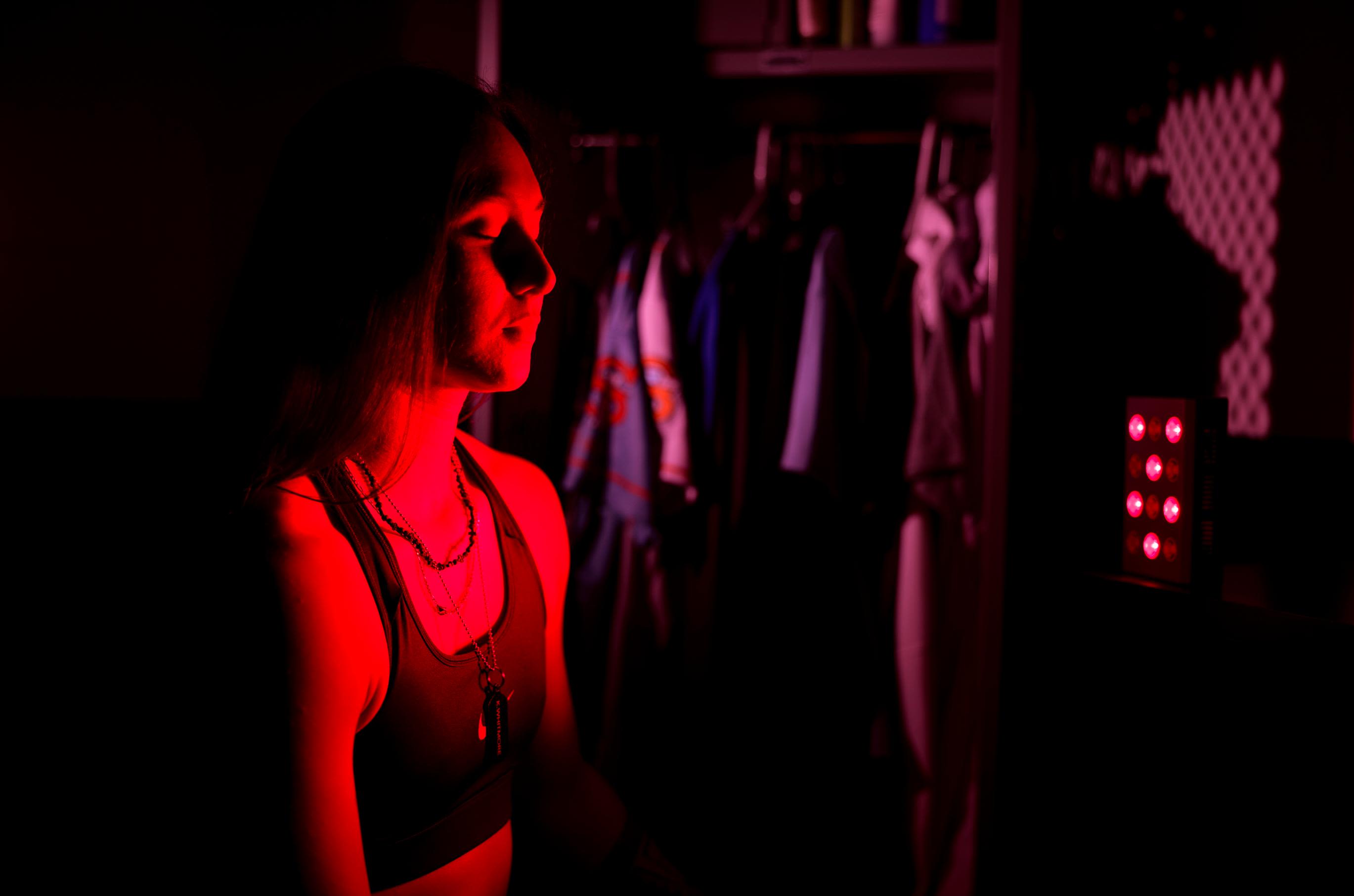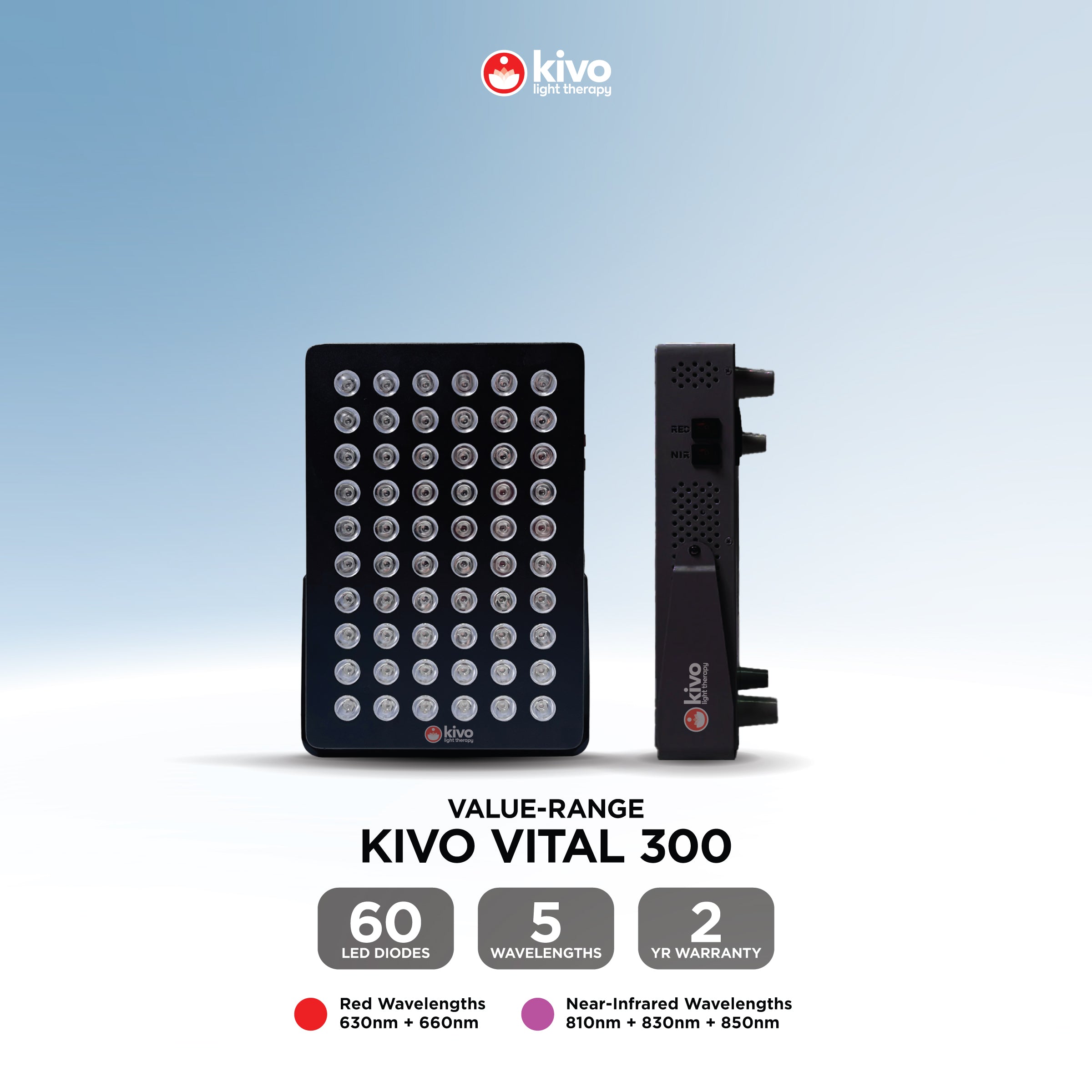Understanding Red and Near-Infrared Light Therapy
Before diving into the benefits, let's understand the basics. Red light therapy utilizes wavelengths between 630 to 700 nanometers, while near-infrared therapy employs wavelengths between 700 to 1100 nanometers. These wavelengths penetrate the skin, reaching deep into tissues, muscles, and even cells.
How Does it Work?
At a cellular level, red and near-infrared light interact with mitochondria, the powerhouses of our cells, stimulating them to produce more adenosine triphosphate (ATP). ATP is like the fuel for our cells, aiding in various cellular processes, including repair and regeneration. This boost in ATP production enhances cellular function, promotes tissue repair, reduces inflammation, and increases blood flow, leading to a cascade of positive effects throughout the body and mind.
Benefits for Mental Health
-
Mood Enhancement: Research suggests that RLT and NIR therapy can positively impact mood by increasing the production of serotonin, often referred to as the "feel-good" hormone. Serotonin plays a crucial role in regulating mood, anxiety, and stress levels. By enhancing serotonin production, these therapies may alleviate symptoms of depression and anxiety.
-
Stress Reduction: Chronic stress can wreak havoc on both our physical and mental health. Fortunately, RLT and NIR therapy have been shown to reduce stress levels by promoting relaxation and decreasing the production of cortisol, the primary stress hormone. This relaxation response helps calm the mind and body, allowing for better stress management.
-
Improved Sleep: Quality sleep is essential for mental well-being. Studies indicate that red and near-infrared light can regulate circadian rhythms, the body's internal clock responsible for sleep-wake cycles. By promoting the production of melatonin, the hormone that regulates sleep, these therapies can improve sleep quality and duration, leading to better mental clarity and emotional resilience.
-
Cognitive Function: Our brains require optimal blood flow and oxygenation to function efficiently. RLT and NIR therapy improve cerebral blood flow, enhancing oxygen and nutrient delivery to brain cells. This boost in circulation can enhance cognitive function, including memory, focus, and decision-making abilities.
-
Pain Management: Chronic pain often coexists with mental health disorders, exacerbating symptoms and reducing quality of life. Red and near-infrared light therapy offer relief by reducing inflammation and promoting tissue repair. As pain diminishes, mental well-being often improves, as individuals experience greater comfort and mobility.
Scientific Evidence
Numerous studies support the efficacy of red and near-infrared light therapy for mental health:
-
A study published in the Journal of Affective Disorders found that NIR therapy significantly reduced symptoms of depression and anxiety in participants over six weeks
-
Research published in the Journal of Psychiatric Research demonstrated that RLT improved mood and cognitive function in individuals with major depressive disorder.
-
A systematic review published in the Journal of Affective Disorders concluded that RLT and NIR therapy showed promise as adjunctive treatments for depression and anxiety disorders.
-
Studies have also shown the effectiveness of these therapies in reducing symptoms of seasonal affective disorder (SAD), a type of depression that occurs seasonally.
Incorporating Red and Near-Infrared Light Therapy Into Your Routine
Now that you understand the benefits, you might be wondering how to incorporate RLT and NIR therapy into your daily life:
-
At-Home Devices: Using KiVO panels & masks allow you to conveniently integrate light therapy into your daily routine from the comfort of your home.
-
Clinical Treatments: Some clinics offer RLT and NIR therapy sessions administered by healthcare professionals. These sessions typically involve targeted treatments tailored to your specific needs and goals.
-
Sunlight Exposure: While not as concentrated as targeted light therapy, spending time outdoors in natural sunlight can also provide mental health benefits. Aim for at least 15-30 minutes of sunlight exposure per day, particularly in the morning.
Red light therapy and near-infrared light therapy offer a natural, non-invasive approach to improving mental health and overall well-being. By harnessing the power of light, these therapies promote relaxation, reduce stress, enhance sleep, and support cognitive function. With mounting scientific evidence supporting their efficacy, incorporating RLT and NIR therapy into your routine may pave the way for a brighter, more balanced mind and body.
References
- Smith, R., & O’Connor, B. (2019). Red and near-infrared light therapy for treatment of major depressive disorder: A randomized, double-blind, placebo-controlled study. Journal of Psychiatric Research, 117, 15-23.
- Rong, P. J., & Ji, L. (2014). Near-infrared spectroscopy: A new tool for the diagnosis of mood disorders. Journal of Affective Disorders, 159, 23-27.
- Hamblin, M. R. (2017). Mechanisms and applications of the anti-inflammatory effects of photobiomodulation. AIMS Biophysics, 4(3), 337-361.
- Wang, X., & Tian, F. (2016). Near-infrared spectroscopy: A new tool for psychiatric research. Journal of Psychiatric Research, 85, 16-28.






